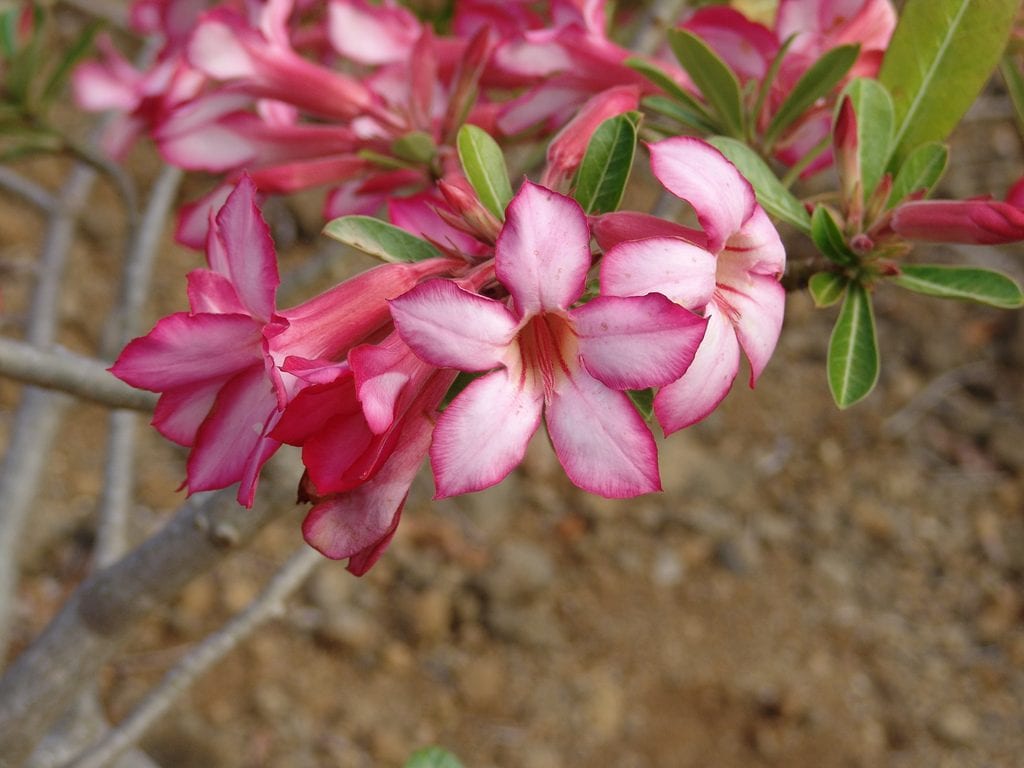
It is probably the most popular caudiciform succulent plant. The Desert Rose is a shrub native to Africa that produces trumpet-shaped flowers of very lively and cheerful flowers.. Although its growth rate is very slow, this makes it an ideal plant to have in a pot for many years, even throughout its life.
However, its cultivation is complicated. It is very sensitive to excess water and cold, so managing to maintain it season after season is not easy. But, to make it a bit so, we are going to give you a series of tips and tricks that will help you make your Desert Rose look and, most importantly, be healthy.
Characteristics of the Desert Rose
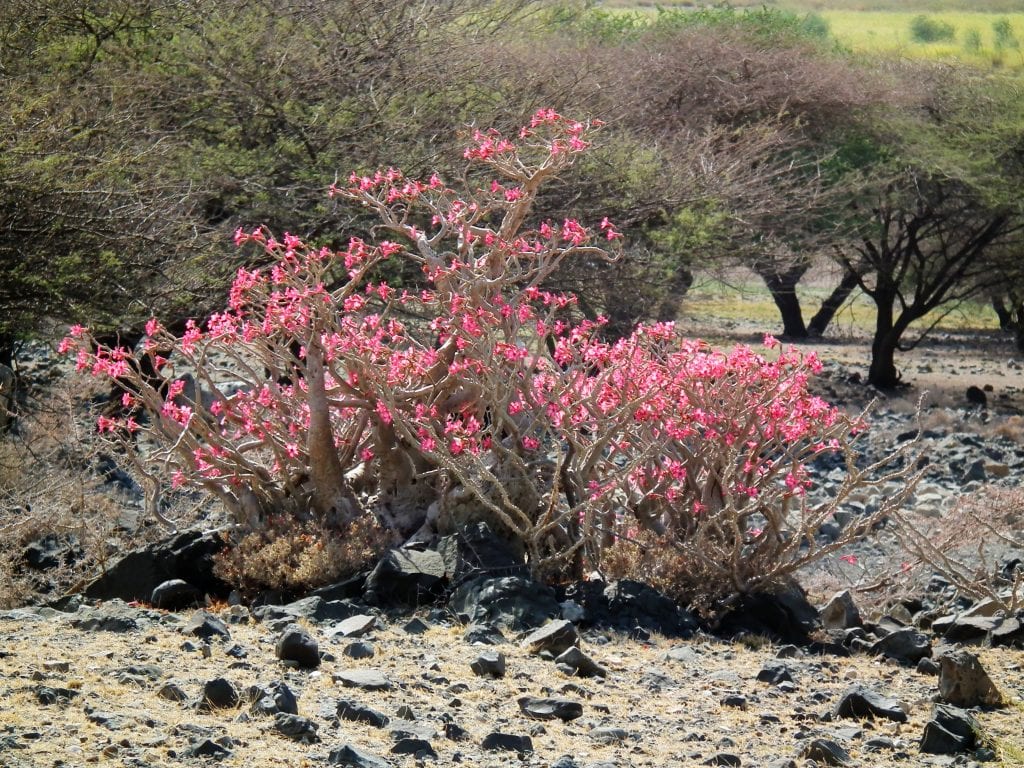
Our protagonist, in habitat (Tanzania).
The Desert Rose, also known as Sabi Star, Kudu, Desert-rose or Adenio and with the scientific name Adenium obesum, It is a shrub belonging to the Apocynaceae family that reaches 2m in height.. It is native to the tropical and subtropical east and south of Africa and Arabia.
Its leaves are evergreen, which means that the plant remains evergreen all year round, but in areas where winter is cool it loses them. These are simple, whole, and leathery. They measure 5 to 15cm in length and 1 to 8cm in width. They are dark green in color, and have a very visible midrib.
The flowers, which appear in summer or early autumn, are trumpet-shaped and composed of five petals 4 to 6cm in diameter.. They can be of different colors: white, red, pink, bicolor (white and pink). Once they are pollinated, the seeds begin to mature, which are 2-3cm long and have a rectangular shape.
Six subspecies are distinguished:
- Adenium obesum subsp. boehmianum: native to Nambia and Angola.
- Adenium obesum subsp. obesity: originally from Arabia.
- Adenium obesum subsp. oleifolium: native to South Africa and Botswana.
- Adenium obesum subsp. socotranum: originally from Socotra.
- Adenium obesum subsp. Somali: native to East Africa.
- Adenium obesum subsp. Swazicum: native to eastern South Africa.
It is important to add that its sap is toxic, so if it is necessary to prune it, you should always wear gloves to avoid problems.
What care do you need?
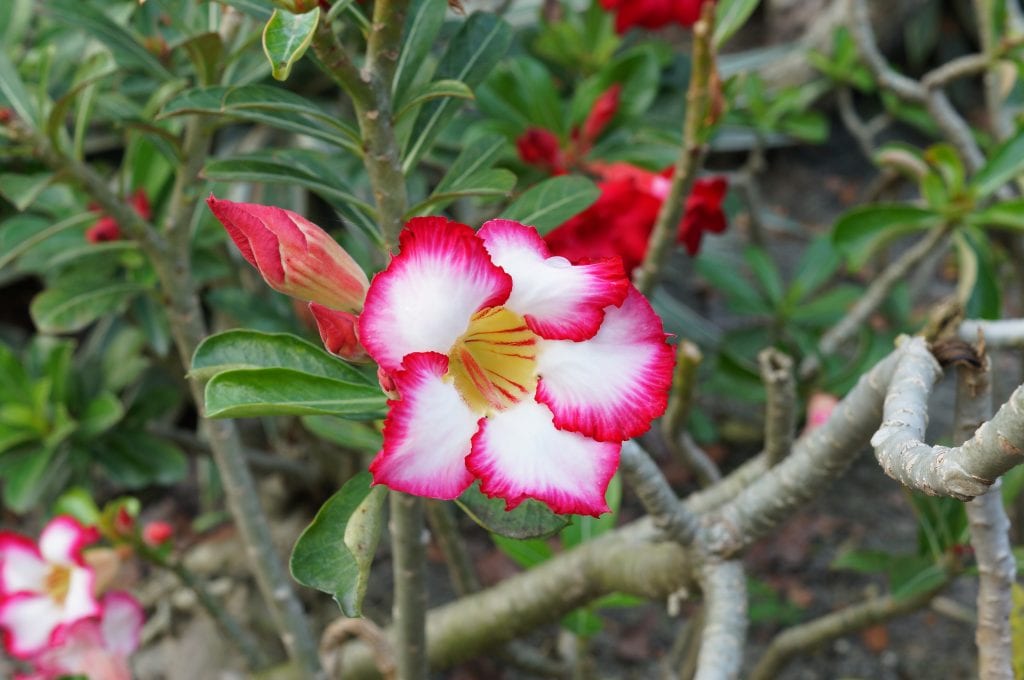
Now that we know what its characteristics are, let's see how to take care of it so that it can grow well in our home:
Location
So that it can grow and have a good development We must place it in an area where it is directly exposed to the sun. It can also be in semi-shade, but it is important that a lot of light reaches the area where it is, otherwise its stems would be too long, which would weaken the plant.
Substratum
Being very sensitive to rot, the substrate we choose must facilitate the drainage of the water. For this reason, I recommend you simply use akadama or, better yet cheek. In this way, the roots will always be well aerated, so in winter they will have less difficulty staying alive.
Irrigation
Irrigation has to be moderate. The frequency will vary depending on where we have it as well as the weather, but we will generally water every 3-4 days in summer and every 5-7 days the rest of the year. During the winter we will space the waterings even more, so that we water once a month.
If we have a plate underneath, we will remove the excess water 15 minutes after having watered.
Subscriber
During spring and summer we must pay it with mineral fertilizers, such as Nitrofoska pouring a small spoonful every 15 days, or with some already prepared for cacti and other succulents that we will find for sale in nurseries and garden stores. If we opt for the latter, it is convenient to follow the indications specified on the product packaging.
Transplant
We have to change the pot as soon as we buy it -in spring or summer- and again every 2-3 years. As its growth rate is slow, it will not be necessary for us to transplant it very often. If you don't know how to do it, we will explain it to you below:
- The first thing you have to do is prepare what will be your new pot. The Adenium is a plant whose root system is rather small, so it is advisable to use those containers that are wider than they are tall.
- Once you have it, fill it a little less than half with the substrate you have chosen.
- Now carefully remove the plant from its "old" pot and insert it into the new one.
- Then check how it looks. The base of the trunk should be slightly below the edge of the pot, just enough so that the water does not overflow. If you see that it is too high or too low, remove or add substrate.
- Finally, finish filling the pot and water it the next day.
Multiplication
Seeds
If we want to obtain new specimens of Adenium through seeds, we will have to acquire them in spring or summer. As soon as we have them, we will have to sow them since their viability period is short. How? So:
- The first thing we will do is prepare the seedbed, which can be a polystyrene tray in which we have made some holes for drainage, or pots.
- Later, we will fill it with vermiculite, which is a highly recommended substrate for seedlings as it maintains the right degree of humidity.
- Now, we will place the seeds so that they are about 2-3cm apart from each other.
- Then, we will cover them with a little more vermiculite and with the help of a sprayer we will moisten the substrate well.
- Finally, we place it outside in full sun, and we water so that the vermiculite does not dry out.
They will germinate in 10-15 days at a temperature of 20-25ºC.
Cuttings
During the summer you can also propagate the desert rose by stem cuttings. Doing it is very easy, so much so that we will only have to follow these steps:
- We will select a stem that looks strong and healthy.
- Then, with a small hand saw previously disinfected with alcohol, we will cut it.
- Then, we will put healing paste on the wound of the plant from which we have removed the stem.
- Now, we have to let the cutting wound dry for 10 days by putting it in an area protected from the sun and ventilated. If you have leaves, we will remove them.
- After that time, we will plant it in a pot with a sandy substrate and keep it slightly damp.
To have more chances of success we can impregnate the base of the cutting with powdered rooting hormones.
Pests
Although it is a plant that resists pests well, there is one with which you will need a little help: the aphids. These are tiny insects, barely 0,5cm long, green or brown, that adhere to flower buds to feed on the sap that circulates through them. To avoid or combat them, the plant should be treated with Neem oil or, if the plague is widespread, with Chlorpyrifos.
Rusticity
Can't stand cold or frost. Ideally, keep it in an area where the minimum temperature remains above 10ºC. In case of living in a colder area, we will have to protect it by placing it inside a greenhouse if there are mild frosts (down to -2ºC) or place it inside the house in a room where a lot of natural light enters and there are no drafts. air.
Desert rose as bonsai
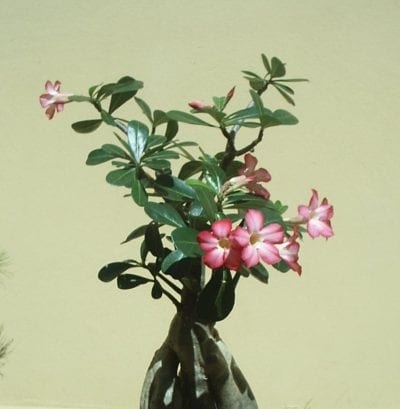
El Adenium obesum Due to its slow growth rate, it is a plant that is often worked as bonsai, something that the old bonsai masters would not like too much, because for them a bonsai is a tree or woody shrub that has small leaves and a trunk woody. The trunk of the Adenium is succulent, that is, it acts as a water store. When it goes too long without rain, the plant can be kept alive thanks to these reserves, something that plants that live in temperate climates do not need to do.
Despite everything, the Desert Rose as bonsai is a very interesting plant. Its root system is rather small, so it can be grown in bonsai tray without problems. We just have to take into account these tips:
- Location: semi-shade with lots of light.
- Substratum: 50% akadama + 50% pumice.
- Irrigation: every 3-4 days in summer and every 10-15 days the rest of the year. In winter, water every 20-25 days.
- Subscriber: during spring and summer using mineral fertilizer for cacti and other succulents.
- Pruning: in spring, before it resumes its growth. Those branches that have grown too much must be trimmed.
- Style: formal vertical.
- Transplant: every 2-3 years.
What is the price?
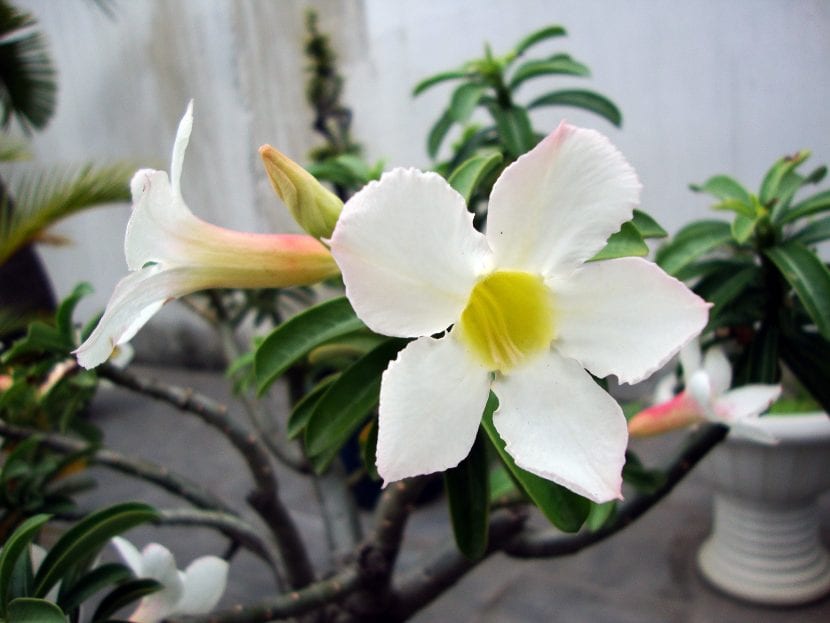
The desert rose is a plant that can be bought in nurseries, garden stores and also in online stores. Its price varies depending on its height and the thickness of its trunkIt can cost 10 euros if it is 20cm high and has a 2-3cm trunk, or 20 euros or more if it is 30cm high and has a thickness of 6-7cm.
The seeds are much cheaper, costing 1 or 2 euros ten to twenty units.
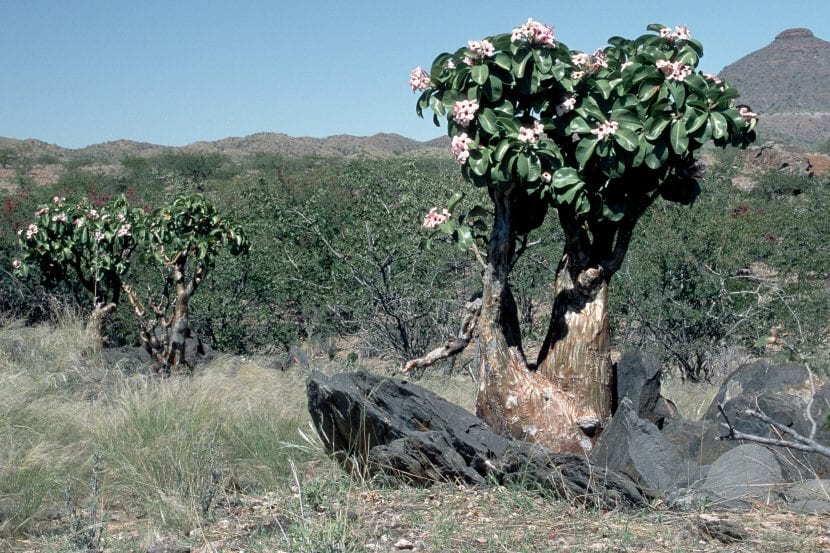
Adenium obesum subsp. boehmianum
And with this we are done. We hope that this special about the beautiful Desert Rose has been of interest to you. If you have any questions, ask 🙂.
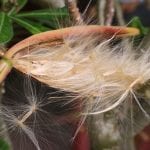
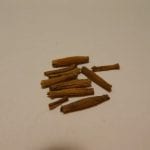
I would like to know why my desert rose gets some yellow leaves that end up falling off. I don't know if I water it a lot or a little
Thank you for sharing clear and interesting information.
Thank you very much for commenting, Abby 🙂
At what time will the seeds give or do not all give seeds?
Hi Irma.
If it is a plant that comes from seed, it takes about 10 years to flower and produce seeds.
If it is cut, it takes less, about 5-6 years.
Greetings.
Interesting, educational and very constructive
Thank you very much Jennis.